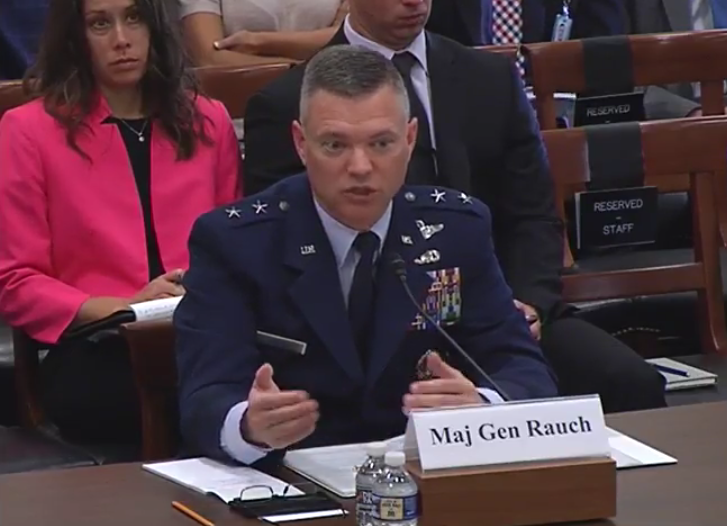
Maj. Gen. John Rauch, head of the Air Force Safety Center, testifies before the House Armed Services Tactical Air and Land Forces Subcommittee on Wednesday. Screenshot photo.
The Air Force and other services do not see a correlation between hours of flying time and air accident rates, witnesses told a House Armed Services subcommittee hearing Wednesday.
Testifying before the Tactical Air and Land Forces Subcommittee, they pointed to other factors, such as changes in operational tempo, as more linked to increases in accident rates.
Active Duty Air Force units recently completed the operational safety review announced last month to try to find causes in a series of aircraft mishaps and ways to improve safety.
During Wednesday’s hearing, Air Force Maj. Gen. John Rauch, chief of safety and commander of the Air Force Safety Center, told the committee that USAF looked at the amount of flying time pilots in recent incidents had had, and ” did not see … a correlation between those that have had a lot or a little [flying time] as it relates to the Class As within recent times.”
The Air Force defines “Class A” mishaps as those that involve property damage of $2 million or more, an injury or occupational illness resulting in a fatality or permanent total disability, or destruction of an Air Force aircraft.
Rauch cautioned that the numbers involved are small, so a connection cannot be ruled out, but that looking at recent incidents, a correlation cannot be drawn.
Army Brig. Gen. David Francis, commanding general of the Army Combat Readiness Center and director of Army safety, also said his service’s data does not show a correlation between flight hours and mishaps.
“What we can say is that our data does indicate that the Army, Army aviation, has experienced the biggest spike in Class A mishaps in conjunction with major combat operations,” he said.
During Desert Shield and Desert Storm, as well as operations in Bosnia, Kosovo, Iraq, and Afghanistan, “especially during the initial stages,” he said, “we experienced a major spike in Class A mishaps.”
Now, he said, the Army is focused on the “hard training “ that will be required to deal with a peer or near-peer threat, “which will drive us to lower flight profiles and increased risk” to prevent the next such spike.